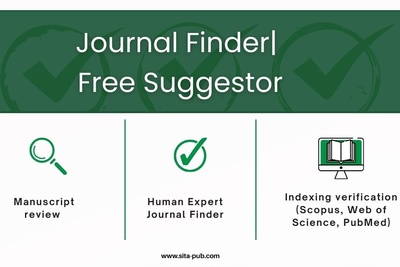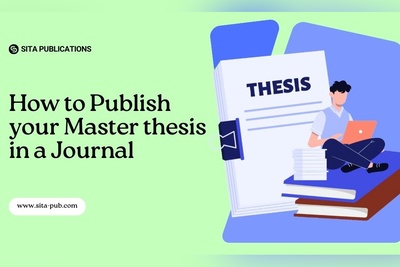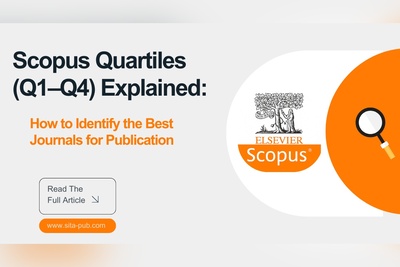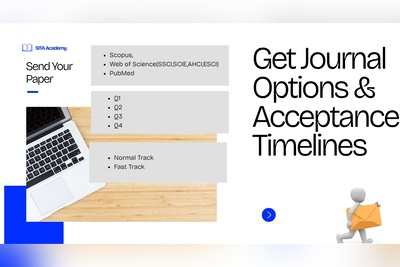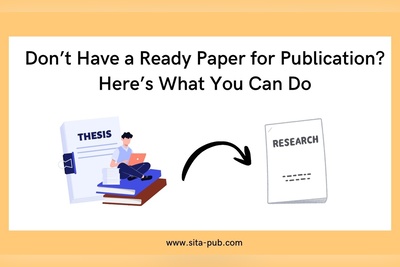What to Write in Author Affiliation Section – Academic Writing Guide 2025
Learn how to correctly write the author affiliation section for academic papers in 2025. This guide covers structure, examples, multiple institutions, international collaborations, and additional details like ORCID and email for proper indexing in Scopus and Web of Science journals.
- What Is an Author Affiliation — and Why Is It Required?
- What to Write in the Author Affiliation Section
- General Structure of Author Affiliation in English
- Common Scenarios and How to Write Affiliation Correctly
- Where to Add Author Affiliation in the Paper
- Additional Details to Include with Affiliation
- Common Mistakes to Avoid in Author Affiliation
- Final Checklist Before Submission

Before submitting your research paper to a journal, one of the first details you’ll be asked to provide is your author information, including your affiliation.
Many researchers — especially those from non-English-speaking countries — often feel uncertain about how to correctly write their affiliation in English. Should you write your department first or your university? Should you include your city and country? What if you work at two institutions or collaborate internationally?
In this detailed guide, we’ll explain everything you need to know about how to write the author affiliation section correctly, including structure, examples, and how to handle different situations that arise during academic publishing.
What Is an Author Affiliation — and Why Is It Required?
Author affiliation refers to the institutional or organizational connection of the author at the time the research was conducted or submitted. It represents where you work or study — your academic home base — and it’s a vital part of your academic identity.
Affiliations help journals, readers, and indexing databases (like Scopus or Web of Science) understand:
Which institution supported the research;
Where the research was conducted;
How to classify and verify the study;
How to credit both the author and their institution.
Your affiliation also impacts how your paper is indexed and cited — correct affiliations ensure that your university or organization receives proper recognition and that your research appears correctly in academic databases.
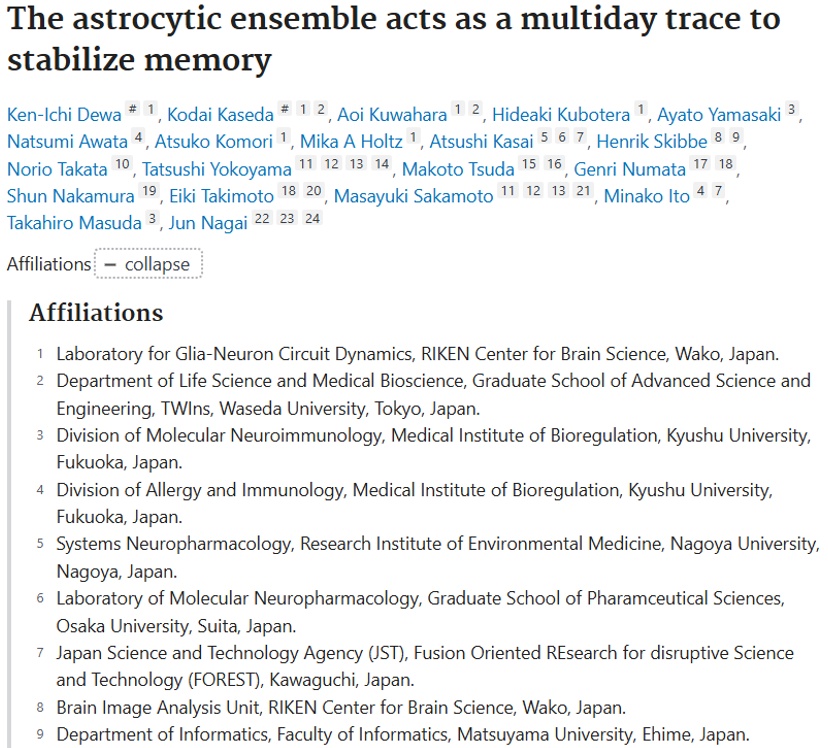
Real Affiliation Example
What to Write in the Author Affiliation Section
A complete affiliation typically includes the following components, written in English and in a specific order:
Element | Description | Example |
1. Department or Faculty | The specific academic unit or division you belong to. | Department of Economics |
2. Institution / University / Organization | The main institution you are affiliated with. | University of Milan |
3. City | The city where your institution is located. | Milan |
4. Country | The country of the institution. | Italy |
5. Email Address | Usually the institutional email of the author. |
Putting it all together:
Department of Economics, University of Milan, Milan, Italy
If multiple authors have different institutions, each will list their own affiliation and will be assigned a number or symbol (¹, ², etc.) to identify which author belongs to which institution.
General Structure of Author Affiliation in English
Here’s the standard format used internationally:
[Department / Faculty], [Institution / University], [City], [Country]
If the journal requires a more detailed format, you can include additional components such as postal codes or institutional divisions, for example:
Department of Physics, Faculty of Science, Kyoto University, Kyoto 606-8502, Japan
Notes:
Use commas to separate each element.
Do not include honorifics like Dr., Prof., or Mr./Ms.
Use official English names of your institutions as listed on their websites.
Avoid abbreviations unless the institution is universally known (e.g., MIT or UCLA).
If your affiliation is in Spanish, for example:
Original Spanish:
¹ Departamento de Ingeniería Informática, Universidad Politécnica de Madrid, Madrid, España
Translated English version for journal submission:
¹ Department of Computer Engineering, Polytechnic University of Madrid, Madrid, Spain
Note: Always translate the department and faculty names into English, while keeping the city and country in English as well.
Common Scenarios and How to Write Affiliation Correctly
Academic authorship can involve various situations — multiple institutions, cross-country collaborations, or shared affiliations. Let’s look at how to write the affiliation properly in each case.
Scenario 1: One Author – One Institution
This is the simplest and most common situation.
Example:
Department of Business Administration, Cairo University, Cairo, Egypt
Email: [email protected]
This format is clear, concise, and accepted by all journals.
Scenario 2: One Author – Two Institutions (Dual Affiliation)
Sometimes, a researcher may hold two academic positions or collaborate with two organizations.
In that case, both affiliations can be listed, separated by semicolons or numbers, depending on the journal style.
Example 1:
¹ Department of Political Science, University of Belgrade, Belgrade, Serbia
² Research Fellow, European Institute for Policy Studies, Brussels, Belgium
Example 2 (Inline Format):
Department of Political Science, University of Belgrade, Belgrade, Serbia; European Institute for Policy Studies, Brussels, Belgium
Tip:
Always list the primary affiliation first, i.e., where most of the work was carried out.
Scenario 3: One Author – Two Countries
Some researchers reside in one country but collaborate on research under another institution abroad.
In such cases, write both affiliations normally — country names make the distinction clear.
Example:
Department of Civil Engineering, Istanbul Technical University, Istanbul, Turkey; Visiting Scholar, University of Toronto, Toronto, Canada
Scenario 4: Multiple Authors with the Same University
If several authors belong to the same institution, you don’t need to repeat the affiliation multiple times.
Instead, use a shared numerical superscript.
Example:
Authors: Emma Roberts¹, Liam Johnson¹, John Miller²
Affiliations:
¹ School of Computing, University of Glasgow, Glasgow, United Kingdom
² Department of Computer Science, University of Edinburgh, Edinburgh, United Kingdom
This format is common in journals using author–affiliation numbering systems.
Scenario 5: Industry or Organization Affiliation (Non-University)
Authors working in companies, research centers, or governmental institutions should list their organization’s official name, city, and country.
Example:
Research and Development Department, Huawei Technologies Co., Ltd., Shenzhen, China
If the organization prefers a short form, make sure it’s the official English translation from their website.
Scenario 6: Independent or Unaffiliated Researchers
If you’re not currently affiliated with any institution, you can still publish your paper.
In that case, use the term Independent Researcher, followed by your city and country.
Example:
Independent Researcher, Kuala Lumpur, Malaysia
However, some journals require an institutional affiliation for indexing purposes.
If possible, use the affiliation where the research was conducted or completed.
Where to Add Author Affiliation in the Paper
Affiliations can appear in different places depending on the journal format. The most common placements are:
Below the Author Names on the Title Page
This is the standard placement for most journals.
Each author’s affiliation is indicated by a superscript number.
Example:
Title: The Impact of Financial Technology on Digital Banking Authors: Ahmed Farouk¹, Maria Gonzalez² ¹ Department of Finance, Cairo University, Cairo, Egypt ² School of Economics, University of Barcelona, Barcelona, SpainIn the Separate Author Information Section (Submission System)
During online submission, you’ll be asked to enter affiliation details in designated fields.
Make sure to match the information exactly as written in your manuscript.
In the Author Biography or Acknowledgment Section
Sometimes journals require a short bio including your current position and institution.
Keep it consistent with your listed affiliation.
Additional Details to Include with Affiliation
In addition to the institutional affiliation, most journals require supplementary author information for indexing and correspondence.
Here’s what you typically need to include:
Required Detail | Purpose | Example |
Corresponding Author Email | The contact email for communication and proofs | |
Unique researcher identifier for indexing | ||
Author Position / Title (Optional) | Sometimes included in bios | Associate Professor of Accounting |
Full Institutional Address (Optional) | Needed for indexing or official correspondence | Department of Management, University of Milan, Via Festa del Perdono 7, Milan 20122, Italy |
Common Mistakes to Avoid in Author Affiliation
Using abbreviations that are not globally recognized (e.g., “MITech” instead of “Massachusetts Institute of Technology”).
Writing affiliation in native language instead of English for international journals.
Including personal information such as home address or phone number.
Mixing multiple institutions in one line without clear separation.
Forgetting to update affiliation if your institution changes before final publication.
Final Checklist Before Submission
Before submitting your paper, make sure the Author Affiliation Section meets the following standards:
Each author’s institution, city, and country are clearly stated.
Superscripts correctly link authors to their affiliations.
The corresponding author’s email is accurate and active.
ORCID IDs are included for all authors (if required).
The institution’s English name matches its official version.
Affiliations are consistent in both the manuscript and submission system.
Publication Assistance with SITA Academy
At SITA Academy, we specialize in helping researchers successfully publish their work in international journals, including Scopus and Web of Science indexed journals. Our expert team provides end-to-end support to ensure your paper meets all academic and technical requirements.
Our services include:
Journal Recommendation: We analyze your paper and suggest journals with the highest acceptance rate in your field.
Formatting & Submission Support: We prepare your manuscript according to the target journal’s specific guidelines.
Technical Quality Enhancement: Native English editing, plagiarism checking, and reference formatting to meet international standards.
Communication & Follow-Up: We assist with submission, respond to reviewer comments, and guide you through the entire publication process.

Let SITA Academy make your publication journey smoother, faster, and more efficient. Send us your manuscript today, and we’ll help you find the best journals and maximize your chances of acceptance.
Verified Contact Channels
If you have any questions, inquiries, or would like to learn more about our services, please don't hesitate to reach out to us. Our dedicated team is ready to assist you.





